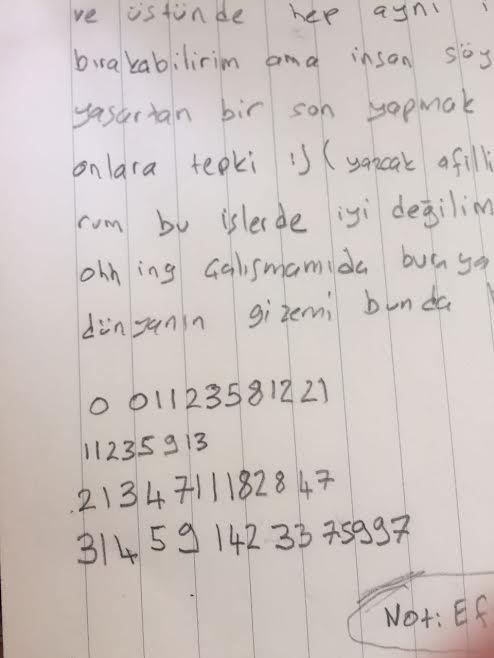My friend left me a code and went abroad. I can't communicate with him since he left. I tried some encryption methods to solve it but couldn't find anything significant. Here is the code.
001123581221
11235913
2134711182847
314591423375997
It should be in Turkish. We are using latin alphabet. I also added a photo of it, so it should be clear. I know that a full photo would be better but my friend just took that part. I hope I used the right keyword.
Edit: Found full photo. There is some kind of poem next to code. Rest of text looks useless. I will try to translate poem but really hard for me.
Edit2: I tried to translate poem. Translated word by word because it is not meaningful even in Turkish.
Lifetime-lie-their receivers
Life-must-without battery-their charges
Why-did you plant-death-this-(forbidden)-hand-calluses
Come into leaf-again-grape-hounds
yaşamalı means must live and yaşam means life but he wrote with space so yaşam alı is wrong word in Turkish.
Lifetime is lie receivers
Must live batteryless charges
Why did you planted calluses in this (forbidden) hand //Saying to death
If grape hounds come into leaf
I hope it helps. That is all I can do. Regards.


